Canon EOS50DBODY, 2807B005, EOS50D28135, 50D, EOS 50D User Manual
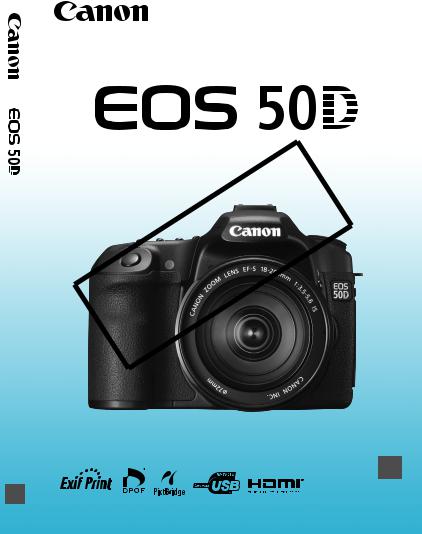
MANUAL INSTRUCTION
COPY
E
E
INSTRUCTION MANUAL
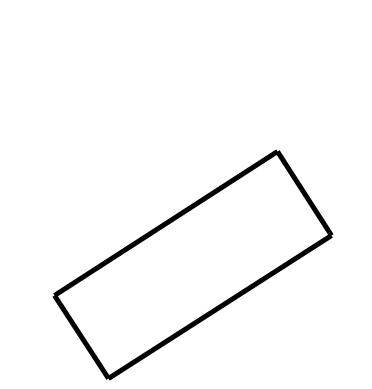
Thank you for purchasing a Canon product.
The EOS 50D is a high-performance, digital SLR camera featuring a fine-detail CMOS sensor with 15.10 effective megapixels, DIGIC 4, high-precision and high-speed 9-point AF (all cross-type points), highspeed 6.3 fps continuous shooting, and Live View shooting.
The camera is highly responsive to any shooting situation at anytime, provides many features for demanding shoots, and expands shooting possibilities with system accessories.
Take a Few Test Shots to Familiarize Yourself with the Camera
With a digital camera, you can immediately view the image you have captured. While reading this manual, take a few test shots and see how they come out. You can then better understand the camera.
To avoid botchedCOPYpictures and accidents, read the Safety Warnings (p.212,213) and Handling Precautions (p.12,13).
Testing the Camera Before Using and Liability
After shooting, playback and check whether the image has been properly recorded. If the camera or memory card is faulty and the images cannot be recorded or downloaded to a personal computer, Canon cannot be held liable for any loss or inconvenience caused.
Copyrights
Copyright laws in your country may prohibit the use of your recorded images of people and certain subjects for anything but private enjoyment. Also be aware that certain public performances, exhibitions, etc., may prohibit photography even for private enjoyment.
CF Card
In this manual, “card” refers to the CF card. The CF card (for recording images) is not included. Please purchase it separately.
2
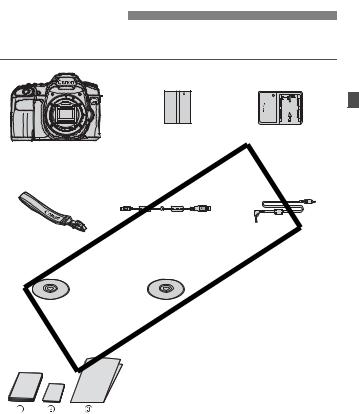
Item Check List
Before starting, check that all the following items have been included with your camera. If anything is missing, contact your dealer.
Camera |
Battery Pack BP-511A |
Battery Charger |
(with protective cover) |
CG-580/CB-5L* |
|
(with eyecup and |
|
|
body cap) |
|
|
Wide Strap |
Interface Cable |
Video Cable |
EW-EOS50D |
IFC-200U |
VC-100 |
EOS DIGITAL |
Software Instruction |
|
Solution Disk |
Manual |
|
(Software) |
|
|
|
(1) Instruction Manual (this booklet) |
|
|
(2) Pocket Guide |
|
COPY |
||
Quick start guide to shooting.
(3) CD-ROM Guide
Guide to the bundled software (EOS DIGITAL Solution Disk) and Software Instruction Manuals.
* Battery Charger CG-580 or CB-5L is provided. (The CB-5L comes with a power cord.)
If you purchased a Lens Kit, check that the lens is included. Depending on the Lens Kit type, the lens instruction manual might also be included.
Be careful not to lose any of the above items.
3
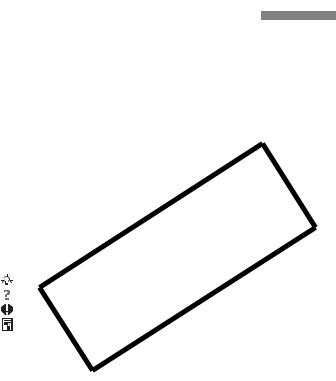
Conventions Used in this Manual 
Icons in this Manual
<6> |
: Indicates the Main Dial. |
<5> |
: Indicates the Quick Control Dial. |
<9> |
: Indicates the Multi-controller. |
<0> |
: Indicates the setting button. |
0, 9, 8: Indicates that the respective function remains active for 4 sec., 6 sec., or 16 sec. respectively after you let go of the button.
*In this manual, the icons and markings indicating the camera’s buttons, dials, and settings correspond to the icons and markings on the camera and on the LCD monitor.
M: WhenCOPYshown on the upper right of the page, it indicates that the function is available only in the Creative Zone modes (p.20).3: Indicates a function which can be changed by pressing theswitch
is already set to <1> or <J> (p.27).
<5> operations explained in this manual assume that the power switch is already set to <J>.
It is assumed that all the menu settings and Custom Functions are set to the default.
For explanatory purposes, the instructions show the camera attached with an EF-S17-85mm f/4-5.6 IS USM lens.
4
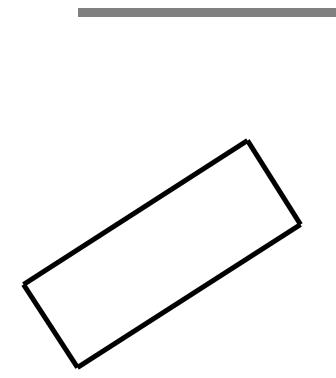
Chapters
For first-time users, chapters 1 and 2 explain the camera’s basic operations and shooting procedures.
|
Introduction |
2 |
|
|
|
||
|
Camera basics. |
|
|
|
|
|
|
|
|
|
|
1 |
Getting Started |
23 |
|
|
|||
|
|
|
|
2 |
Basic Shooting |
47 |
|
|
|||
Fully automatic shooting for different subjects. |
|
||
|
|
||
|
|
|
|
3 |
COPY |
|
|
Image Settings |
59 |
|
|
|
|
|
|
4 |
Setting the AF and Drive Modes |
83 |
|
|
|||
|
|
|
|
5 |
Advanced perations |
91 |
|
|
|||
Shooting features for specific types of subjects. |
|
||
|
|
||
|
|
|
|
6 |
Live View Shooting |
115 |
|
|
|||
Shoot while viewing the LCD monitor. |
|
||
|
|
||
|
|
|
|
7 |
Image Playback |
131 |
|
|
|||
|
|
|
|
8 |
Sensor Cleaning |
147 |
|
|
|||
|
|
|
|
9 |
Printing Images and Transferring Images to a Computer |
153 |
|
|
|||
|
|
|
|
10 |
Customizing the Camera |
171 |
|
|
|||
|
|
|
|
11 |
Reference |
187 |
|
|
|||
|
|
|
|
5

Contents |
|
|
|
Introduction |
|
|
Item Check List.................................................................................................. |
3 |
|
Conventions Used in this Manual...................................................................... |
4 |
|
Chapters............................................................................................................ |
5 |
|
Index to Features ............................................................................................ |
10 |
|
Handling Precautions ...................................................................................... |
12 |
|
Quick Start Guide ............................................................................................ |
14 |
|
Nomenclature .................................................................................................. |
16 |
1 |
Getting Started |
23 |
|
Recharging the Battery.................................................................................... |
24 |
|
Installing and Removing the Battery................................................................ |
26 |
|
COPY |
|
|
Turning on the Power ...................................................................................... |
27 |
|
Installing and Removing the CF Card.............................................................. |
29 |
|
Attaching and Detaching a Lens ..................................................................... |
31 |
|
About the Lens Image Stabilizer...................................................................... |
33 |
|
Basic Operation............................................................................................... |
34 |
|
Using the Quick Control Screen ...................................................................... |
38 |
|
Menu Operations............................................................................................. |
40 |
|
Before You Start.............................................................................................. |
42 |
|
Setting the Interface Language .................................................................... |
42 |
|
Setting the Date and Time............................................................................ |
42 |
|
Formatting the ard ..................................................................................... |
43 |
|
Set the Power-off Time/Auto Power Off ....................................................... |
44 |
|
Reverting the Camera to the Default Settings.............................................. |
45 |
2 |
Basic Shooting |
47 |
|
1Fully Automatic Shooting .......................................................................... |
48 |
|
Full Auto Techniques....................................................................................... |
50 |
|
2Shooting Portraits ...................................................................................... |
51 |
|
3Shooting Landscapes................................................................................ |
52 |
|
4Shooting Close-ups.................................................................................... |
53 |
|
5Shooting Moving Subjects.......................................................................... |
54 |
|
6Shooting Portraits at Night ......................................................................... |
55 |
|
7Disabling Flash ......................................................................................... |
56 |
|
CCreative Auto Shooting ............................................................................. |
57 |
6

|
|
Contents |
3 |
Image Settings |
59 |
|
Setting the Image-recording Quality................................................................. |
60 |
|
i: Setting the ISO Speed.............................................................................. |
63 |
|
ASelecting a Picture Style .......................................................................... |
65 |
|
ACustomizing a Picture Style ..................................................................... |
67 |
|
ARegistering a Picture Style....................................................................... |
69 |
|
B: Setting the White Balance ....................................................................... |
71 |
|
Custom White Balance ................................................................................. |
72 |
|
Setting the Color Temperature ...................................................................... |
73 |
|
White Balance Correction ................................................................................ |
74 |
|
Lens Peripheral Illumination Correction ........................................................... |
76 |
|
Creating and Selecting a Folder....................................................................... |
78 |
|
File Numbering Methods .................................................................................. |
80 |
|
sCOPY: Shutter-Priority AE ................................................................................... |
94 |
|
Setting the Color Space ................................................................................... |
82 |
4 |
Setting the AF and Drive Modes |
83 |
|
f: Selecting the AF Mode.............................................................................. |
84 |
|
SSelecting the AF Point ............................................................................... |
86 |
|
When Autofocus Fails ...................................................................................... |
88 |
|
Manual Focusing........................................................................................... |
88 |
|
iSelecting the Drive Mode........................................................................... |
89 |
|
jSelf-timer Operation.................................................................................... |
90 |
5 |
Advanced Operations |
91 |
|
d: Program AE................................................................................................ |
92 |
|
f: Aperture-Priority AE................................................................................. |
96 |
|
Depth-of-Field Preview ................................................................................. |
97 |
|
a: Manual Exposure....................................................................................... |
98 |
|
8: Automatic Depth-of-Field AE ................................................................. |
99 |
|
qSelecting the Metering Mode ................................................................... |
100 |
|
Setting Exposure Compensation.................................................................... |
101 |
|
hAuto Exposure Bracketing (AEB) ............................................................ |
102 |
|
AAE Lock .................................................................................................... |
103 |
|
Bulb Exposures .............................................................................................. |
104 |
|
Mirror Lockup ................................................................................................. |
106 |
7
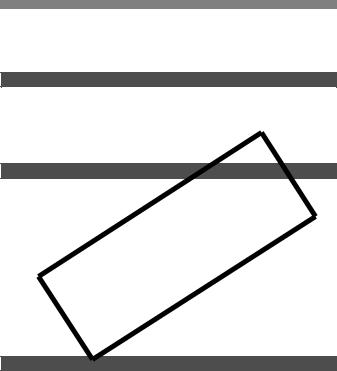
Contents |
|
|
|
DUsing the Built-in Flash.............................................................................. |
107 |
|
Flash Control ................................................................................................. |
111 |
|
External Speedlites ....................................................................................... |
113 |
6 |
Live View Shooting |
115 |
|
APreparing for Live View Shooting............................................................ |
116 |
|
Shooting ........................................................................................................ |
118 |
|
Using AF to Focus......................................................................................... |
121 |
|
Focusing Manually......................................................................................... |
127 |
|
Silent Shooting .............................................................................................. |
128 |
7 |
Image Playback |
131 |
|
xImage Playback....................................................................................... |
132 |
|
BShooting Information Display............................................................. |
133 |
|
HISearching for Images Quickly ............................................................ |
135 |
|
uMagnified View ........................................................................................ |
137 |
|
bRotating the Image................................................................................... |
138 |
|
Auto Playback (Slide Show) .......................................................................... |
139 |
|
Viewing the Images on TV............................................................................. |
141 |
|
KProtecting Images.................................................................................... |
143 |
|
LErasing Images......................................................................................... |
144 |
|
Changing Image Playback Settings............................................................... |
145 |
|
Adjusting the L D Monitor Brightness ....................................................... |
145 |
|
Setting the Image Review Time ................................................................. |
145 |
|
Auto Rotate of Vertical Images................................................................... |
146 |
8 |
SensorCOPYCleaning |
147 |
|
fAutomatic Sensor Cleaning ................................................................... |
148 |
|
Appending Dust Delete Data......................................................................... |
149 |
|
Manual Sensor Cleaning ............................................................................... |
151 |
8
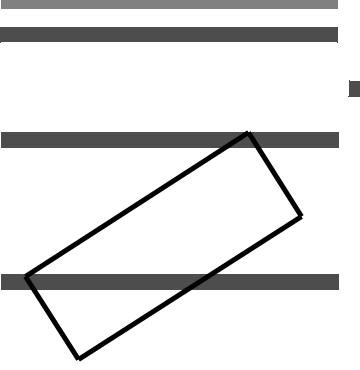
|
|
|
Contents |
9 |
Printing Images and Transferring Images to a Computer |
153 |
|
|
Preparing to Print ........................................................................................... |
154 |
|
|
wPrinting..................................................................................................... |
156 |
|
|
Trimming the Image .................................................................................... |
161 |
|
|
Digital Print Order Format (DPOF)................................................................. |
163 |
|
|
Direct Printing with DPOF .............................................................................. |
166 |
|
|
dTransferring Images to a Personal Computer.......................................... |
167 |
|
10 |
Customizing the Camera |
171 |
|
|
Setting Custom Functions .............................................................................. |
172 |
|
|
Custom Functions .......................................................................................... |
173 |
|
|
Custom Function Settings .............................................................................. |
174 |
|
|
C.Fn I |
: Exposure ...................................................................................... |
174 |
|
C.Fn II |
: Image ........................................................................................... |
176 |
|
C.Fn III : Autofocus/Drive............................................................................ |
178 |
|
|
C.Fn IV : Operation/Others.......................................................................... |
181 |
|
|
Registering My Menu ..................................................................................... |
185 |
|
|
Register Camera User Settings ..................................................................... |
186 |
|
11 |
Reference |
187 |
|
|
B hecking amera Settings .................................................................... |
188 |
|
|
Using a Household Power Outlet ................................................................... |
190 |
|
|
Replacing the Date/Time Battery ................................................................... |
191 |
|
|
Using the Battery Grip.................................................................................... |
192 |
|
|
Menu Settings ................................................................................................ |
193 |
|
|
FunctionCOPYAvailability Table ............................................................................. |
196 |
|
|
Troubleshooting Guide................................................................................... |
198 |
|
|
Error Codes.................................................................................................... |
201 |
|
|
System Map ................................................................................................... |
202 |
|
|
Specifications ................................................................................................. |
204 |
|
|
Index .............................................................................................................. |
|
223 |
9
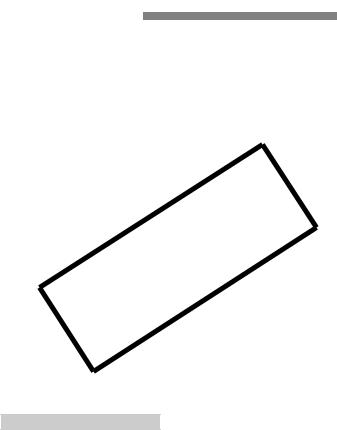
Index to Features
|
Power |
|
|
|
Image improvement features |
|
|
Battery |
|
|
|
• Lens peripheral illumination |
|
|
|
|
|
correction |
Î p.76 |
|
|
• Charging |
|
Î p.24 |
|
||
|
|
|
• Auto Lighting Optimizer |
Î p.177 |
||
|
• Battery check |
Î p.28 |
|
|||
|
|
• Noise reduction |
|
|||
|
Power outlet |
Î p.190 |
|
|
||
|
|
for long exposures |
Î p.176 |
|||
|
Auto power off |
Î p.44 |
|
|||
|
|
• Noise reduction |
|
|||
|
|
|
|
|
for high ISO |
Î p.176 |
|
Lens |
|
|
|
• Highlight tone priority |
Î p.177 |
|
Attaching/Detaching |
Î p.31 |
|
|
|
|
|
|
White balance |
|
|||
|
Zoom |
|
Î p.32 |
|
|
|
|
Image Stabilizer |
Î p.33 |
|
White balance selection |
Î p.71 |
|
|
|
|
Î p.72 |
|||
|
|
COPY |
||||
|
|
|
|
|
Custom WB |
|
|
Basic Settings |
|
|
Color temperature setting Î p.73 |
||
|
(Menu Functions) |
|
|
White balance correction Î p.74 |
||
|
Language |
|
Î p.42 |
|
WB bracketing |
Î p.75 |
|
Date/Time |
|
Î p.42 |
|
AF |
|
|
LCD brightness |
|
|
|
|
|
|
adjustment |
Î p.145 |
|
AF mode |
Î p.84 |
|
|
Beeper |
|
Î p.193 |
|
AF point selection |
Î p.86 |
|
Shoot w/o card |
Î p.29 |
|
Manual focusing |
Î p.88 |
|
|
|
|
|
|
|
|
|
Recording Images |
|
|
Metering |
|
|
|
Format |
|
Î p.43 |
|
Metering mode |
Î p.100 |
|
Create/select a folder |
Î p.78 |
|
|
|
|
|
File No. |
|
Î p.80 |
|
Drive |
|
Image Quality
Image-recording quality |
Î p.60 |
ISO speed |
Î p.63 |
Picture Style |
Î p.65 |
Color space |
Î p.82 |
Drive modes |
Î p.89 |
Maximum burst |
Î p.62 |
10
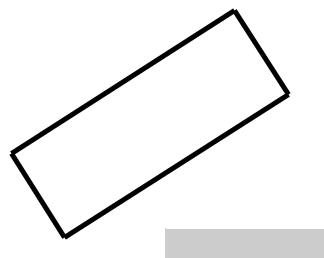
Index to Features
|
|
|
|
|
|
|
|
|
|
|
|
|
|
|
|
|
Shooting |
|
|
Image playback |
|
|
|
|
Creative Auto |
Î p.57 |
|
Image review time |
Î p.145 |
|
|
|
Quick Control screen |
Î p.38 |
|
Single image playback |
Î p.132 |
|
|
|
Self-timer |
Î p.90 |
|
• Shooting information |
|
|
|
|
|
|
|||||
|
Program AE |
Î p.92 |
|
display |
Î p.133 |
|
|
|
|
Index display |
Î p.135 |
|
|
||
|
Shutter-priority AE |
Î p.94 |
|
|
|
||
|
|
Image browsing |
|
|
|
||
|
Aperture-priority AE |
Î p.96 |
|
|
|
|
|
|
|
(Jump display) |
Î p.136 |
|
|
||
|
Manual exposure |
Î p.98 |
|
|
|
||
|
|
Magnified view |
Î p.137 |
|
|
||
|
Bulb |
Î p.104 |
|
|
|
||
|
|
Manual image rotate |
Î p.138 |
|
|
||
|
Mirror lockup |
Î p.106 |
|
|
|
||
|
|
Auto image rotate |
Î p.146 |
|
|
||
|
|
|
|
|
|
||
|
|
|
|
Auto playback |
Î p.139 |
|
|
|
Exposure adjustment |
|
|
|
|||
|
|
|
|
Viewing the images |
|
|
|
|
Exposure compensation |
Î p.101 |
|
|
|
||
|
|
on TV |
Î p.141 |
|
|
||
|
AEB |
Î p.102 |
|
|
|
||
|
|
rotect |
Î p.143 |
|
|
||
|
AE lock |
Î p.103 |
|
|
|
||
|
|
Erase |
Î p.144 |
|
|
||
|
Exposure level |
|
|
|
|
||
|
|
|
|
|
|
|
|
|
increments |
Î p.174 |
|
|
|
|
|
|
|
Customization |
|
|
|
||
|
|
|
|
|
|
|
|
|
|
|
|
Custom Function (C.Fn) |
Î p.171 |
|
|
|
Flash |
|
|
|
|||
|
|
|
|
My Menu |
Î p.185 |
|
|
|
Built-in flash |
Î p.107 |
|
|
|||
|
|
Camera user setting |
|
|
|
||
|
• Flash exposure |
|
|
|
|
|
|
|
|
|
registration |
Î p.186 |
|
|
|
|
compensation |
Î p.109 |
|
|
|
||
|
|
|
|
|
|
||
|
• FE lock |
Î p.110 |
|
|
|
|
|
|
|
Sensor cleaning/ |
|
|
|
||
|
|
|
|
|
|
|
|
|
ExternalCOPYflash Î p.113 |
|
|
|
|||
|
Flash control |
Î p.111 |
|
Dust reduction |
|
|
|
|
|
Sensor cleaning |
Î p.147 |
|
|
||
|
|
|
|
|
|
||
|
|
|
|
Add Dust Delete Data |
Î p.149 |
|
|
|
Live View shooting |
|
|
|
|||
|
Live View shooting |
Î p.116 |
|
|
|
|
|
|
|
Viewfinder |
|
|
|
||
|
• AF |
Î p.121 |
|
|
|
|
|
|
|
Dioptric adjustment |
Î p.34 |
|
|
||
|
• Exposure simulation |
Î p.117 |
|
|
|
||
|
• Grid |
Î p.119 |
|
Changing the focusing |
|
|
|
|
• Silent shooting |
Î p.128 |
|
screen |
Î p.183 |
|
|
11
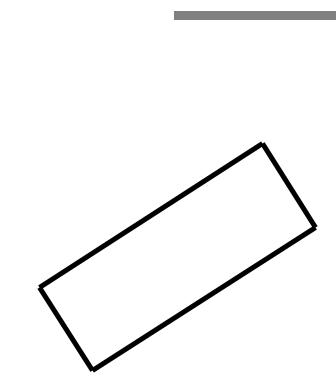
Handling Precautions
Camera Care
This camera is a precision instrument. Do not drop it or subject it to physical shock.
The camera is not waterproof and cannot be used underwater. If you accidentally drop the camera into water, promptly consult your nearest Canon Service Center. Wipe off any water droplets with a dry cloth. If the camera has been exposed to salty air, wipe it with a well-wrung wet cloth. Never leave the camera near anything having a strong magnetic field such as a magnet or electric motor. Also avoid using or leaving the camera near anything emitting strong radio waves such as a large antenna. Strong magnetic fields can cause camera misoperation or destroy image data.
Do not leave the camera in excessive heat such as in a car in direct sunlight. High temperatures can cause the camera to malfunction.
The camera contains precision electronic circuitry. Never attempt to disassemble the camera yourself.
Use a blowerCOPYto blow away dust on the lens, viewfinder, reflex mirror, and focusing screen. Do not use cleaners that contain organic solvents to clean the camera body or lens. For stubborn dirt, take the camera to the nearest Canon Service Center.
Do not touch the camera’s electrical contacts with your fingers. This is to prevent the contacts from corroding. Corroded contacts can cause camera misoperation.
If the camera is suddenly brought in from the cold into a warm room, condensation may form on the camera and internal parts. To prevent condensation, first put the camera in a sealed plastic bag and let it adjust to the warmer temperature before taking it out of the bag.
If condensation forms on the camera, do not use the camera. This is to avoid damaging the camera. If there is condensation, remove the lens, card and battery from the camera, and wait until the condensation has evaporated before using the camera.
If the camera will not be used for an extended period, remove the battery and store the camera in a cool, dry, well-ventilated location. Even while the camera is in storage, press the shutter button a few times once in a while to check that the camera is still working.
Avoid storing the camera where there are corrosive chemicals such as a darkroom or chemical lab.
If the camera has not been used for an extended period, test all its functions before using it. If you have not used the camera for some time or if there is an important shoot coming up, have the camera checked by your Canon dealer or check the camera yourself and make sure it is working properly.
12
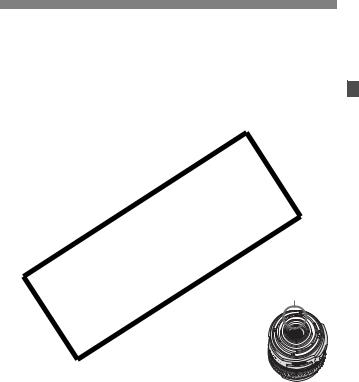
Handling Precautions
LCD Panel and LCD Monitor
Although the LCD monitor is manufactured with very high precision technology with over 99.99% effective pixels, there might be a few dead pixels among the remaining 0.01% or less pixels. Dead pixels displaying only black or red, etc., are not a malfunction. They do not affect the images recorded.
If the LCD monitor is left on for a prolonged period, screen burn-in may occur where you see remnants of what was displayed. However, this is only temporary and will disappear when the camera is left unused for a few days. In low or high temperatures, the LCD monitor display may seem slow or it might look black. It will return to normal at room temperature.
Cards
To protect the card and its recorded data, note the following:
Do not drop, bend, or wet the card. Do not subject to excessive force, physical shock, and vibration.
Do not store or use the card near anything having a strong magnetic field such as a TV set, speakers, or magnet. Also avoid places prone to having static electricity.
Do not leave the card in direct sunlight or near a heat source. Store the card in a case.
Do not store the card in hot, dusty, or humid locations.
Lens Electrical ontacts
After detaching the lens from the camera, attach the lens |
Contacts |
caps or put down the lens with the rear end up to avoid |
|
scratching the lens surface and electrical contacts. |
|
COPY |
|
Cautions During Prolonged Use
When you shoot continuously for a prolonged period or use Live View shooting for a long period, the camera may become hot. Although this is not a malfunction, holding the hot camera for a long period can cause slight skin burns.
13
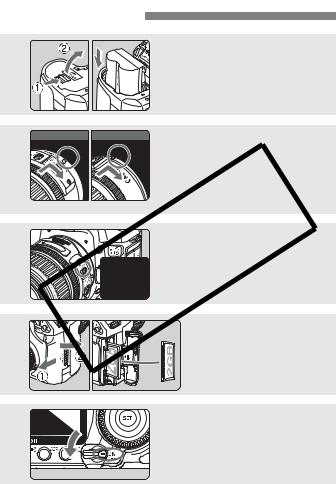
Quick Start Guide |
|
1 |
Insert the battery. (p.26) |
To recharge the battery, see page 24. |
2 |
ForEF-EFS -S lens |
For EF lens Attach the lens. (p.31) |
|
When attaching an EF-S lens, align it |
|
|
|
with the white index on the camera. |
|
|
For other lenses, align it with the red |
|
|
index. |
|
COPY |
3 |
Set the lens focus mode switch |
to <AF>. (p.31) |
|
4 |
Open the slot cover and |
insert a card. (p.29) |
|
|
Face the label side toward you |
|
and insert the end with the |
|
small holes into the camera. |
5 |
Set the power switch to <1>. |
(p.27) |
14
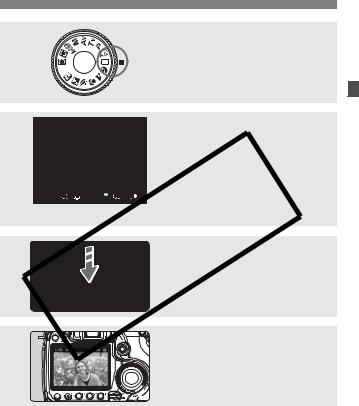
Quick Start Guide
6 |
Set the Mode Dial to <1> (Full |
Auto). (p.48) |
|
|
All the necessary camera settings will |
|
be set automatically. |
7 |
Focus the subject. (p.35) |
Look through the viewfinder and aim |
|
|
the viewfinder center over the subject. |
|
Press the shutter button halfway, and |
|
the camera will focus the subject. |
|
If necessary, the built-in flash will pop- |
|
up automatically. |
8 |
Take the picture. (p.35) |
ress the shutter button completely to |
|
|
take the picture. |
9 |
Review the picture. (p.145) |
The captured image will be displayed |
|
|
COPfor aboutY2 sec. on the LCD monitor. |
 To display the image again, press the
To display the image again, press the 
 <x> button (p.132).
<x> button (p.132).
To view the images captured so far, see “Image Playback” (p.132). To delete an image, see “Erasing Images” (p.144).
15
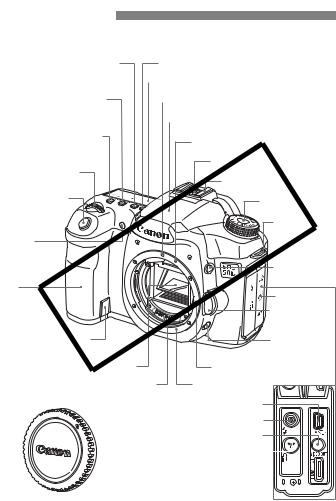
Nomenclature
For detailed information, reference page numbers are provided in parentheses (p.**).
<n> Metering mode |
<U> LCD panel illumination button (p.104) |
|||||
selection/White balance |
|
|
|
|
|
|
selection button (p.100/71) |
|
|
LCD panel (p.18) |
|||
<o> AF mode |
|
|
||||
|
|
|
|
EF lens mount index (p.31) |
||
selection/Drive mode |
|
|
|
|
||
|
|
|
|
|
|
|
selection button (p.84/89) |
|
|
|
|
|
Built-in flash/AF-assist beam (p.107/87) |
|
|
|
|
|
|
|
|
|
|
|
|
|
|
<m> ISO speed setting/
Flash exposure compensation EF-S lens mount index (p.31) button (p.63/109)
|
|
Flash-sync contacts |
<6> Main Dial |
|
|
(p.36) |
|
Hot shoe (p.113) |
Shutter button |
Mode Dial (p.20) |
|
(p.35) |
|
|
|
|
|
|
|
Strap mount |
|
|
(p.23) |
Red-eye |
|
|
reduction/ |
|
|
Self-timer lamp |
|
|
(p.108/90) |
|
<D> Flash |
|
|
button (p.107) |
Grip |
|
|
(Battery |
|
Terminal cover |
compartment) |
|
Lens release |
|
|
|
|
|
button (p.32) |
DC coupler cord |
Depth-of-field |
|
hole (p.190) |
preview button |
|
|
|
(p.97) |
|
COPY |
|
Mirror (p.106,151) |
Lens lock pin |
Contacts (p.13) |
Lens mount |
|
Digital terminal (p.154,167) |
|
PC terminal (p.114) |
|
Video OUT terminal (p.141) |
Remote control terminal (p.105) (N3 type) 


HDMI mini OUT terminal (p.142) 
Body cap (p.31)
16
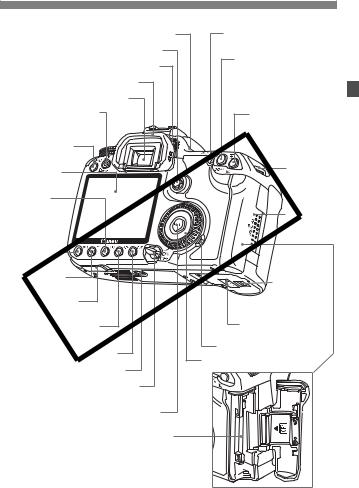
|
|
|
Nomenclature |
||
|
|
<V> Focal plane mark |
<p> AF start button |
||
|
|
<9> Multi-controller (p.36) |
(p.35,84,118) |
|
|
|
|
|
|
||
|
|
Dioptric adjustment knob (p.34) |
<A/I> AE lock/ |
||
|
|
FE lock button/Index/ |
|||
|
|
|
|||
|
|
Eyecup (p.97) |
Reduce button |
||
|
|
(p.103/110/135/137,161) |
|||
|
|
|
|||
|
|
Viewfinder eyepiece |
|
|
|
<A/l> Live View |
<S/u> |
|
|||
shooting/Print/Share |
AF point selection/ |
||||
button (p.117/159,168) |
|||||
Magnify button |
|||||
|
|
|
|||
<M> Menu |
(p.86/137,161) |
||||
|
|
||||
button (p.40) |
|
|
|||
LCD monitor |
|
Strap mount |
|||
|
(p.23) |
||||
(p.40, 145) |
|
||||
|
|
||||
|
|
COPY |
|
||
<B> Info/ |
|
|
|||
Trimming |
|
|
|
||
orientation button |
|
Card slot |
|||
(p.120,132,188/ |
|
cover (p.29) |
|||
161) |
|
|
|
|
|
<x> Playback |
|
|
|||
button (p.132) |
|
|
|||
|
<L> Erase |
Battery |
|||
|
button (p.144) |
||||
|
compartment |
||||
|
|
|
|||
Extension system |
cover release |
||||
lever (p.26) |
|||||
terminal |
|
||||
|
|
|
|||
|
<A> Picture Style |
Battery compartment |
|||
|
cover (p.26) |
|
|||
|
selection button (p.65) |
|
|||
|
|
|
|||
<B> Function button (p.184) |
Access lamp (p.30) |
||||
<5> Quick Control Dial (p.37) |
|||||
|
|
|
|||
|
|
Tripod socket |
|
|
|
Power/Quick Control Dial switch (p.27)
<0> Setting button (p.40)
Card slot (p.29)
Card ejection button (p.30) 
17
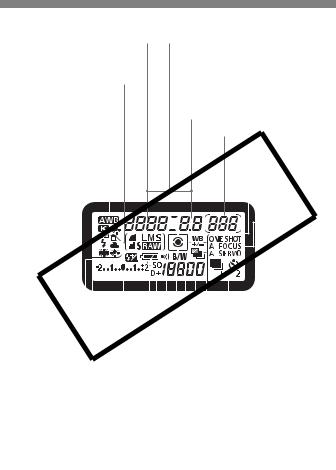
Nomenclature
LCD Panel
|
|
|
|
|
|
|
|
|
|
|
|
|
|
|
|
|
|
|
|
|
|
|
|
|
|
|
|
|
|
|
|
|
|
|
|
|
|
|
|
|
|
|
|
- - - |
|
Shutter speed |
|
|
|
|
|
|
|
|
|
|
|
|
|
|
|
|
|
|
|
|
|
|
|
AF point selection ([ - |
- |
- ]) |
|||||||||||||||||||
|
|
|
|
|
|
|
|
|
|
|
|
|
|
|
|
|
|
|
|
|
|
|
|
|
|
|
|
|
|
|
|
|
|
|
|
|
|
|
|
|
|
|
|
- - - |
|
Busy (buSY) |
|
|
|
|
|
|
|
|
|
|
|
|
|
|
|
|
|
|
|
|
|
|
|
|
Card full warning (FuLL CF) |
||||||||||||||||||||
|
|
|
|
|
|
|
|
|
|
|
|
|
|
|
|
|
|
|
|
|
|
|
|
||||||||||||||||||||||
Built-in flash recycling (buSY) |
|
|
|
|
|
|
|
|
|
|
|
|
|
Card error warning (Err CF) |
|||||||||||||||||||||||||||||||
|
|
|
|
|
|
|
|
|
|
|
|
|
|||||||||||||||||||||||||||||||||
Image-recording quality (p.60) |
|
|
|
|
|
|
|
|
|
|
|
|
No card warning (no CF) |
|
|||||||||||||||||||||||||||||||
|
|
|
|
|
|
|
|
|
|
|
|
|
|||||||||||||||||||||||||||||||||
|
|
|
|
|
|
|
|
|
|
|
|
Error code (Err) |
|
|
|||||||||||||||||||||||||||||||
37 |
Large/Fine |
|
|
|
|
|
|
|
|
|
|
|
|
|
|||||||||||||||||||||||||||||||
|
|
|
|
|
|
|
|
|
|
|
|
|
|||||||||||||||||||||||||||||||||
|
|
|
|
|
|
|
|
Cleaning image sensor (CLEA n) |
|||||||||||||||||||||||||||||||||||||
38 |
Large/Normal |
|
|
|
|
|
|
|
|
|
|
|
|||||||||||||||||||||||||||||||||
|
|
|
|
|
|
|
|
|
|
|
|||||||||||||||||||||||||||||||||||
|
|
|
|
|
|
|
|
|
|
|
|
|
|
|
|
|
|
|
|
|
|
|
|
|
|
|
|||||||||||||||||||
47 Medium/Fine |
|
|
|
|
|
|
|
|
|
|
|
|
Aperture |
|
|
||||||||||||||||||||||||||||||
|
|
|
|
|
|
|
|
|
|
|
|
||||||||||||||||||||||||||||||||||
48 Medium/Normal |
|
|
|
|
|
|
|
|
|
|
|
|
|
|
|
|
|
|
|
Shots remaining |
|||||||||||||||||||||||||
67 |
Small/Fine |
|
|
|
|
|
|
|
|
|
|
|
|
|
|
|
|
|
|
|
|
|
|
||||||||||||||||||||||
|
|
|
|
|
|
|
|
|
|
|
|
|
|
|
|
|
|
|
Shots remaining |
||||||||||||||||||||||||||
68 |
Small/Normal |
|
|
|
|
|
|
|
|
|
|
|
|
|
|
|
|
|
|
|
|
|
|
||||||||||||||||||||||
|
|
|
|
|
|
|
|
|
|
|
|
|
|
|
|
|
|
|
during WB bracketing |
||||||||||||||||||||||||||
1 RAW |
|
|
|
|
|
|
|
|
|
|
|
|
|
|
|
|
|
|
|
|
|
|
|
|
|
|
|
|
|
|
|
|
|
|
|||||||||||
|
|
|
|
|
|
|
|
|
|
|
|
|
|
|
|
|
|
|
|
|
|
|
|
|
|
|
|
|
|
|
|
|
|
Self-timer countdown |
|||||||||||
D Small RAW |
|
|
|
|
|
|
|
|
|
|
|
|
|
|
|
|
|
|
|
|
|
|
|||||||||||||||||||||||
|
|
|
|
|
|
|
|
|
|
|
|
|
|
|
|
|
|
|
Bulb exposure time |
||||||||||||||||||||||||||
|
|
|
|
|
|
|
|
|
|
|
|
|
|
|
|
|
|
|
|
|
|
|
|
|
|
|
|
|
|
|
|
|
|
|
|
|
|
||||||||
|
|
|
|
COPY |
|||||||||||||||||||||||||||||||||||||||||
White balance (p.71) |
|
|
|
|
|
|
|
|
|
|
|
|
|
|
|
|
|
|
|
|
|
|
|
|
|
|
|
|
|
White balance |
|||||||||||||||
QAuto |
|
|
|
|
|
|
|
|
|
|
|
|
|
|
|
|
|
|
|
|
|
|
|
|
|
|
|
|
|
|
|
|
|
|
|
|
|
|
correction (p.74) |
||||||
|
|
|
|
|
|
|
|
|
|
|
|
|
|
|
|
|
|
|
|
|
|
|
|
|
|
|
|
|
|
|
|
|
|
|
|
|
|
|
|
|
|
||||
W Daylight |
|
|
|
|
|
|
|
|
|
|
|
|
|
|
|
|
|
|
|
|
|
|
|
|
|
|
|
|
|
|
|
|
|
|
|
|
|
|
|
|
AF mode (p.84) |
||||
E Shade |
|
|
|
|
|
|
|
|
|
|
|
|
|
|
|
|
|
|
|
|
|
|
|
|
|
|
|
|
|
|
|
|
|
|
|
|
|
|
|
|
X |
||||
R Cloudy |
|
|
|
|
|
|
|
|
|
|
|
|
|
|
|
|
|
|
|
|
|
|
|
|
|
|
|
|
|
|
|
|
|
|
|
|
|
|
|
|
One-Shot AF |
||||
Y Tungsten light |
|
|
|
|
|
|
|
|
|
|
|
|
|
|
|
|
|
|
|
|
|
|
|
9 |
|||||||||||||||||||||
U White |
|
|
|
|
|
|
|
|
|
|
|
|
|
|
|
|
|
|
|
|
|
|
|
|
|
|
|
|
|
|
|
|
|
|
|
|
|
|
|
|
|||||
|
|
|
|
|
|
|
|
|
|
|
|
|
|
|
|
|
|
|
|
|
|
|
|
|
|
|
|
|
|
|
|
|
|
|
|
|
|
|
|
AI Focus AF |
|||||
|
|
|
|
|
|
|
|
|
|
|
|
|
|
|
|
|
|
|
|
|
|
|
|
|
|
|
|
|
|
|
|
|
|
|
|
|
|
|
|
||||||
I |
fluorescent light |
|
|
|
|
|
|
|
|
|
|
|
|
|
|
|
|
|
|
|
|
|
|
|
|
|
|
|
|
|
|
|
Z |
||||||||||||
Flash |
|
|
|
|
|
|
|
|
|
|
|
|
|
|
|
|
|
|
|
|
|
|
|
|
|
|
|
|
|
|
|
|
|
|
|
|
|
|
|
|
AI Servo AF |
||||
OCustom |
|
|
|
|
|
|
|
|
|
|
|
|
|
|
|
|
|
|
|
|
|
|
|
|
|
|
|
|
|
|
|
|
|
|
|
|
|
|
|
|
|
|
|||
P Color |
|
|
|
|
|
|
|
|
|
|
|
|
|
|
|
|
|
|
|
|
|
|
|
|
|
|
|
|
|
|
|
|
|
Drive mode (p.89) |
|||||||||||
|
|
|
|
|
|
|
|
|
|
|
|
|
|
|
|
|
|
|
|
|
|
|
|
|
|
|
|
|
|
|
|
|
|||||||||||||
|
temperature |
|
|
|
|
|
|
|
|
|
|
|
|
|
|
|
|
|
|
|
|
|
|
|
|
u Single shooting |
|||||||||||||||||||
Flash exposure |
|
|
|
|
|
|
|
|
|
|
|
|
|
|
|
|
|
|
|
|
|
|
|
|
|
|
oHigh-speed continuous |
||||||||||||||||||
|
|
|
|
|
|
|
|
|
|
|
|
|
|
|
|
|
|
|
|
|
|
|
|
|
|
|
|||||||||||||||||||
compensation (p.109) |
|
|
|
|
|
|
|
|
|
|
|
|
|
|
|
|
|
|
|
|
|
|
|
|
|
|
|||||||||||||||||||
|
|
|
|
|
|
|
|
|
|
|
|
|
|
|
|
|
|
|
|
|
|
|
|
|
|
shooting |
|||||||||||||||||||
Battery check (p.28) |
|
|
|
|
|
|
|
|
|
|
|
|
|
|
|
|
|
|
|
|
|
|
|
i Low-speed continuous |
|||||||||||||||||||||
|
|
|
|
|
|
|
|
|
|
|
|
|
|
|
|
|
|
|
|
|
|
|
|
||||||||||||||||||||||
zxbn |
|
|
|
|
|
|
|
|
|
|
|
|
|
|
|
|
|
|
|
|
|
|
|
|
|
shooting |
|||||||||||||||||||
|
|
|
|
|
|
|
|
|
|
|
|
|
|
|
|
|
|
|
|
j Self-timer (10 sec.) |
|||||||||||||||||||||||||
|
|
|
|
|
|
|
|
|
|
|
|
|
|
|
|
|
|
|
|
|
|
|
|
|
|
|
|
|
|
|
|
|
|
|
|
|
|||||||||
Exposure level indicator |
|
|
|
|
|
|
|
|
|
|
|
|
|
|
|
|
|
|
|
|
|
|
|
|
|
l Self-timer (2 sec.) |
|||||||||||||||||||
|
|
|
|
|
|
|
|
|
|
|
|
|
|
|
|
|
|
|
|
|
|
|
|
|
|||||||||||||||||||||
Exposure compensation |
|
|
|
|
|
|
|
|
|
|
|
|
|
|
|
|
|
<h> AEB (p.102) |
|||||||||||||||||||||||||||
amount (p.101) |
|
|
|
|
|
|
|
|
|
|
|
|
|
|
|
|
|
|
|||||||||||||||||||||||||||
|
|
|
|
|
|
|
|
|
|
|
|
|
|
|
|
|
|
|
|
|
|
|
|
|
|
|
|
|
|||||||||||||||||
AEB range (p.102) |
|
|
|
|
|
|
|
|
|
|
|
|
|
|
|
Metering mode (p.100) |
|||||||||||||||||||||||||||||
|
|
|
|
|
|
|
|
|
|
|
|
|
|
|
|
||||||||||||||||||||||||||||||
Flash exposure compensation |
|
|
|
|
|
|
|
|
|
|
|
|
|
|
|
qEvaluative metering |
|||||||||||||||||||||||||||||
amount (p.109) |
|
|
|
|
|
|
|
|
|
|
|
|
|
|
|
|
|
|
|
|
|
|
|
|
|
|
|
|
wPartial metering |
||||||||||||||||
Card writing status |
|
|
|
|
|
|
|
|
|
|
|
|
|
|
|
|
|
|
|
|
|
|
rSpot metering |
|
|||||||||||||||||||||
|
|
|
|
|
|
|
|
|
|
|
|
|
|
|
|
|
|
|
|
|
|
||||||||||||||||||||||||
|
|
|
|
|
|
|
|
|
|
|
|
|
|
|
|
|
|
|
|
|
|
|
|
|
|
|
|
|
|
|
|
eCenter-weighted average metering |
|||||||||||||
|
<g> ISO speed (p.63) |
|
|
|
|
|
|
|
|
|
|
|
|
|
|
|
|
|
|
|
|
|
|
|
|
|
|||||||||||||||||||
<A> Highlight tone priority (p.177) |
|
|
|
|
|
|
|
|
|
|
ISO speed (p.63) |
|
|||||||||||||||||||||||||||||||||
|
|
|
|
|
|
|
|
|
|
|
|||||||||||||||||||||||||||||||||||
|
|
|
|
|
|
<M> Beeper (p.193) |
|
|
|
|
|
|
|
<0> Monochrome shooting (p.66) |
|||||||||||||||||||||||||||||||
|
|
|
|
|
|
|
|
|
|
|
|
|
|||||||||||||||||||||||||||||||||
The display will show only the settings currently applied.
18
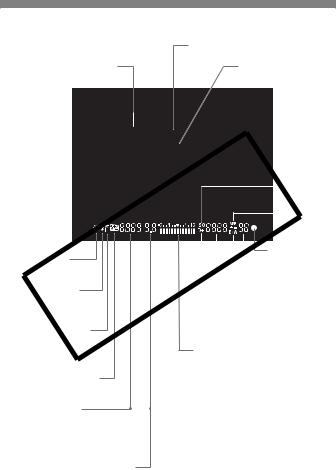
Nomenclature
Viewfinder Information
AF points (Superimposed display)
Focusing screen |
Spot metering circle |
|
|
|
|
|
|
|
|
|
|
|
|
|
|
|
|
|
|
|
<g> |
|
COPY |
|
||||||||||
|
|
ISO speed |
||||||||||
|
|
|
|
|
|
|
|
|
|
|
|
White balance |
|
|
|
|
|
|
|
|
|
|
|
|
correction |
|
|
|
|
|
|
|
|
|
|
|
<o> Focus |
|
|
|
|
|
|
|
|
|
|
|
|
||
<A> AE lock/ |
|
|
|
|
|
|
|
|
|
confirmation |
||
AEB in-progress |
|
|
|
|
|
|
|
|
|
light |
||
<D> Flash-ready |
|
|
|
|
|
|
|
|
Max. burst |
|||
|
|
|
|
|
|
|
|
|||||
|
|
|
|
|
|
<0> Monochrome |
||||||
Improper FE lock |
|
|
|
|
|
|
||||||
|
|
|
|
|
|
|
|
|
shooting |
|||
warning |
|
|
|
|
|
|
|
|
|
|||
|
|
|
|
|
|
|
|
|
|
|||
<e> High-speed sync |
|
|
|
|
ISO speed |
|
||||||
|
|
|
|
|
||||||||
|
|
<A> Highlight tone priority |
||||||||||
(FP flash) |
|
|
||||||||||
|
|
|
|
|
|
|
|
|
|
|||
<d> FE lock/ |
Exposure level indicator |
|
||||||||||
FEB in-progress |
|
|||||||||||
|
Exposure compensation amount |
|||||||||||
|
|
|
|
|||||||||
|
|
|
|
Flash exposure compensation |
||||||||
<y> Flash exposure |
|
amount |
|
|||||||||
compensation |
|
AEB range |
|
|||||||||
|
|
|
Red-eye reduction lamp-on indicator |
|||||||||
Shutter speed |
|
Card full warning (FuLL CF) |
|
|||||||||
|
|
|||||||||||
FE lock (FEL) |
Card error warning (Err CF) |
|
||||||||||
Busy (buSY) |
No card warning (no CF) |
|
||||||||||
Built-in flash recycling (DbuSY) |
|
|
|
|
|
|
|
|
|
|
||
Aperture
The display will show only the settings currently applied.
19
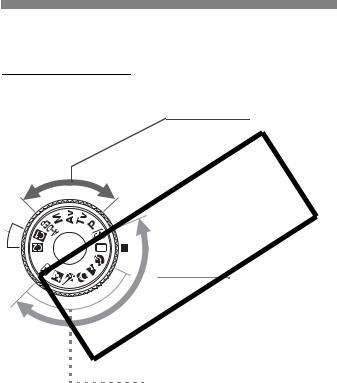
Nomenclature
Mode Dial
The Mode Dial has the Basic Zone modes and Creative Zone modes.
Camera User Settings
Most camera settings can be registered under wor x(p.186).
Creative Zone
These modes give you more control over the result.
d : Program AE (p.92)
s : Shutter-priority AE (p.94)
: Aperture-priority AE (p.96)
f
COPY a : Manual exposure (p.98)
8: Automatic depth-of-field AE (p.99)
 Basic Zone
Basic Zone
All you do is press the shutter
button. Fully automatic shooting for
specific kinds of subjects.
1: Full Auto (p.48)
: Creative Auto (p.57)
Image Zone
2: Portrait (p.51)
3: Landscape (p.52)
4: Close-up (p.53)
5: Sports (p.54)
6: Night Portrait (p.55)
7: Flash Off (p.56)
20
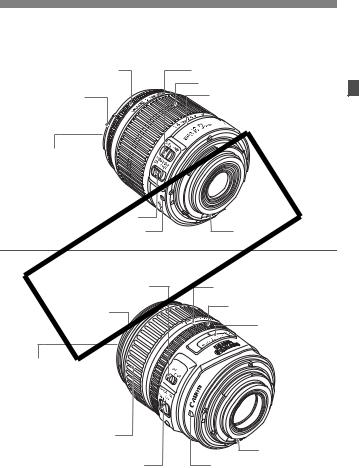
Nomenclature
Nomenclature for Kit Lenses
EF-S18-200mm f/3.5-5.6 IS and EF-S18-55mm f/3.5-5.6 IS
Focusing ring (p.88,127) |
Focus mode switch (p.31) |
|
Zoom ring (p.32) |
Hood mount |
Zoom position index (p.32) |
(p.209, 210) |
|
Filter thread |
|
(front of lens) |
|
(p.209, 210) |
|
Image Stabilizer switch (p.33) |
|
Lens mount index (p.31) |
Contacts (p.13) |
EF-S17-85mm f/4-5.6 IS USM and EF28-135mm f/3.5-5.6 IS USM
Focus mode switch (p.31) |
Zoom position index (p.32) |
Hood mount |
Focusing ring (p.88,127) |
|
|
(p.209, 210) |
Distance scale |
|
|
Filter threadCOPY |
|
(front of lens) (p.209, 210) |
|
Zoom ring (p.32)
Image Stabilizer switch (p.33)
Contacts (p.13) |
Lens mount index (p.31) |
21
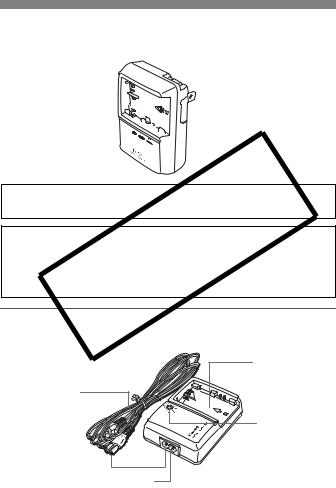
Nomenclature
Battery Charger CG-580
Charger for Battery Pack BP-511A (p.24).
 Power plug
Power plug
Battery pack slot 
Charge lamp 






Battery ChargerCOPYB-5L
This power unit is intended to be correctly orientated in a vertical or floor mount position.
IMPORTANT SAFETY INSTRUCTIONS-SAVE THESE INSTRUCTIONS. |
|
DANGER-TO REDUCE THE RISK F FIRE |
R ELECTRIC SHOCK, |
CAREFULLY FOLLOW THESE INSTRUCTI |
NS. |
For connection to a supply not in the U.S.A., use an attachment plug adapter |
|
of the proper configuration for the power outlet. |
|
Charger for Battery Pack BP-511A (p.24).
Battery pack slot
Power cord
Charge lamp
Power cord socket
22
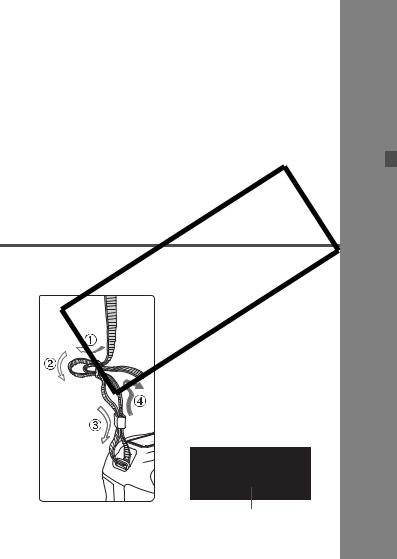
1
Getting Started
This chapterCOPYexplains preparatory steps and basic camera operations.
Attaching the Strap
Pass the end of the strap through the camera’s strap mount eyelet from the bottom. Then pass it through the strap’s buckle as shown in the illustration. Pull the strap to take up any slack and make sure the strap will not loosen from the buckle.
The eyepiece cover is also attached to the strap (p.105).
Eyepiece cover
23
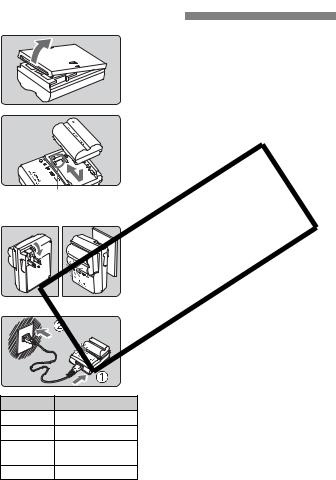
Recharging the Battery
|
1 |
Remove the protective cover. |
|
|
|
When you remove the battery from |
|
|
|
the camera, be sure to reattach the |
|
|
|
cover to protect it against short |
|
|
|
circuiting. |
|
|
2 Attach the battery. |
||
|
|
Align the battery’s front edge with the |
|
|
|
battery charger’s index line. While |
|
|
|
pressing down the battery, slide it in |
|
|
|
the direction of the arrow. |
|
Battery pack slot index |
To detach the battery, follow the |
||
above procedure in reverse. |
|||
|
|
||
CG-580 |
3 Recharge the battery. |
||
|
|||
|
|
For CG-580 |
|
|
|
As shown by the arrow, flip out the |
|
|
|
battery charger’s prongs and insert |
|
|
|
the prongs into a power outlet. |
|
CB-5L |
|
For CB-5L |
|
|
Connect the power cord to the |
||
|
|
charger and insert the plug into the |
|
|
|
power outlet. |
|
|
|
X Recharging starts automatically and |
|
|
|
the charge lamp starts blinking in red. |
|
|
COPY |
||
|
|
It takes about 100 min. to fully |
|
Recharge Level |
Charge Lamp |
recharge a completely exhausted |
|
battery. |
|||
0 - 50% Blinks once per second |
|||
The time required to recharge the |
|||
50 - 75% Blinks twice per second |
|||
battery depends on the ambient |
|||
|
Blinks three times |
||
75 - 90% |
temperature and battery’s charge |
||
|
per second |
level. |
|
90% or higher |
Lights on |
||
|
|||
* The numbers and markings on the battery charger correspond to the table above.
24
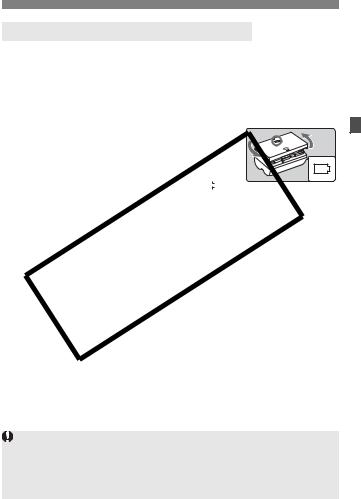
Recharging the Battery




 Tips for Using the Battery and Charger
Tips for Using the Battery and Charger
Recharge the battery on the day before or on the day it is to be used.
Even during non-use or storage, a charged battery will gradually discharge and lose its power.
After recharging the battery, detach it and unplug the power cord or prongs from the power outlet.
You can attach the cover in a different orientation to indicate whether the battery has been recharged or not.
If the battery has been recharged, attach the
cover so that the battery-shaped hole < |
|
> is |
|
||
aligned over the blue sticker on the battery. If the battery is |
||
exhausted, attach the cover in the opposite orientation. |
||
WhenCOPYnot using the camera, remove the battery.
If the battery is left in the camera for a prolonged period, a small amount of power current is released, resulting in excess discharge and shorter battery life. Store the battery with the protective cover attached. Storing the battery after it is fully charged can lower the battery’s performance.
The battery charger can also be used in foreign countries.
The battery charger is compatible with a 100 V AC to 240 V AC 50/60 Hz power source. If necessary, attach a commercially-available plug adapter for the respective country or region. Do not attach any portable voltage transformer to the battery charger. Doing so can damage the battery charger.
If the battery becomes exhausted quickly even after being fully charged, the battery has worn out.
Purchase a new battery.
Do not recharge any battery pack other than Battery Pack BP-511A, BP514, BP-511, or BP-512.
Battery Pack BP-511A is dedicated to Canon products only. Using it with an incompatible battery charger or product may result in malfunction or accidents for which Canon cannot be held liable.
25
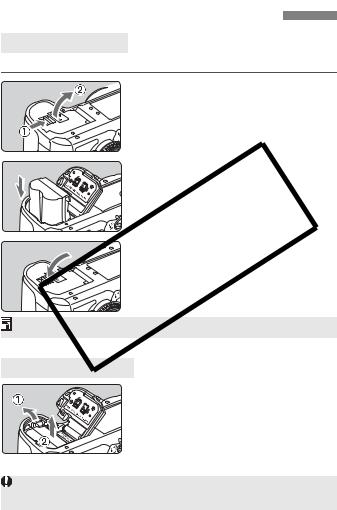
Installing and Removing the Battery 
Installing the Battery
Load a fully charged Battery Pack BP-511A into the camera.
 1 Open the battery compartment cover.
1 Open the battery compartment cover.
Slide the lever as shown by the arrow and open the cover.
2 Insert the battery.
Insert the end with the battery
contacts.





 COPY
COPY
 Insert the battery until it locks in
Insert the battery until it locks in 

 place.
place.
 3 Close the cover.
3 Close the cover.
ress the cover until it snaps shut.
Battery Pack BP-514, BP-511, or BP-512 can also be used.
Removing the Battery
Open the cover and remove the
battery.
Press the battery lock lever as shown
by the arrow and remove the battery.
To prevent short circuiting, be sure to attach the protective cover to the battery.
After opening the battery compartment cover, be careful not to swing it back further. Otherwise, the hinge might break.
26
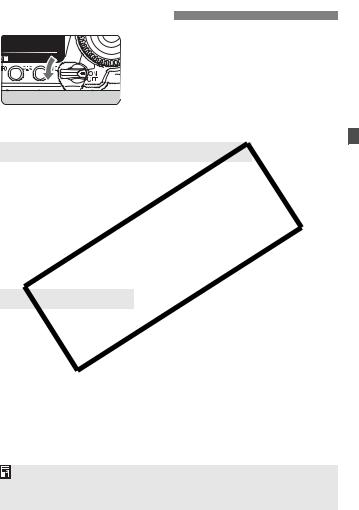
Turning on the Power
<2> : The camera is turned off and does not operate. Set to this position when not using the camera.
<1> : The camera turns on. <J> : The camera and <5>
operate (p.37).
About the Automatic Self-Cleaning Sensor
Whenever you set the power switch to <1/J> or <2>, the sensor cleaning will be executed automatically. During the sensor cleaning, the LCD monitor will display <f>. Even during the sensorCOPYcleaning, you can still shoot by pressing the shutter button halfway (p.35) to stop the sensor cleaning and take a picture.
If you turn on/off the power switch <1/J>/<2> at a short interval, the <f> icon might not be displayed. This is normal and not a problem.
About Auto Power ff
To save battery power, the camera turns off automatically after about 1 minute of non-operation. To turn on the camera again, just press the shutter button halfway (p.35).
You can change the auto power-off time with the menu’s [5Auto power off] setting (p.44).
If you set the power switch to <2> while an image is being recorded to the card, [Recording ...] will be displayed and the power will turn off after the card finishes recording the image.
27
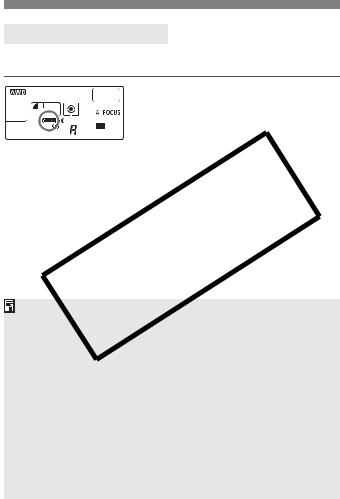
Turning on the Power
Checking the Battery Level
When the power switch is set to <1> or <J>, the battery level will be indicated in one of four levels:
z : Battery level is OK.
x : Battery level is slightly down,
|
|
|
|
|
|
|
|
|
but adequate power remains. |
|
|
|
|
|
|
|
|
|
|||
|
|
|
|
|
|
|
|
b: Battery will be exhausted |
||
|
|
|
|
|
|
|
|
|||
|
|
|
|
|
|
|
|
|
soon. |
|
|
|
|
|
|
|
|
|
n: Battery must be recharged. |
||
|
|
COPY |
||||||||
Battery Life |
|
|
|
|
[Approx. number of shots] |
|||||
Temperature |
|
|
|
|
Shooting Conditions |
|
||||
|
|
|
|
|
|
No Flash |
|
50% Flash Use |
|
|
At 23°C / 73°F |
|
800 |
|
640 |
|
|||||
At 0°C / 32°F |
|
|
680 |
|
540 |
|
||||
The figures above are based on a fully-charged Battery ack BP-511A, no Live View shooting, and IPA ( amera & Imaging Products Association) testing standards.
The actual number of shots may be fewer than indicated above depending on the shooting conditions.
Pressing the shutter button halfway for long periods or operating only the autofocus can also reduce the number of possible shots.
The number of possible shots will decrease with more frequent use of the LCD monitor.
The number of possible shots with the BP-514 is the same as indicated in the table.
The number of possible shots with the BP-511 or BP-512 will be about 75% of the figures in the table for 23°C / 73°F. At 0°C / 32°F, the figures will be about the same as in the table.
The lens operation is powered by the camera’s battery. Using certain lenses can reduce the number of possible shots.
Using the Image Stabilizer of the lens will decrease the number of possible shots (shorter battery life).
For battery life with Live View shooting, see page 119.
28
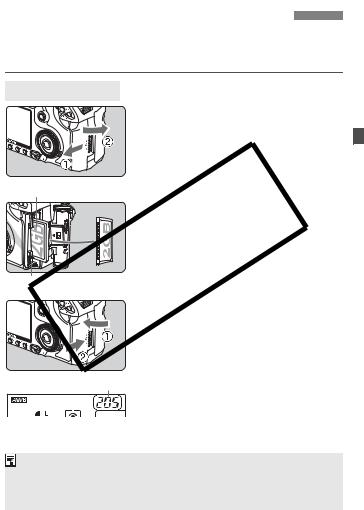
|
1 |
Open the cover. |
|
|
Slide the cover as shown by the |
|
|
arrow to open it. |
Label side |
2 Insert the card. |
|
|
|
As shown in the illustration, face |
|
|
the label side toward you and |
|
|
insert the end with the small holes |
|
|
into the camera. |
|
|
If the card is inserted in the wrong |
Card ejection button |
|
way, it may damage the camera. |
|
X The card ejection button will stick out. |
|
|
|
|
|
3 Close the cover. |
|
|
|
Close the cover and slide it in the |
|
|
direction shown by the arrow until it |
|
|
snaps shut. |
|
|
X When you set the power switch to |
COPY<1> or <J>, the number of |
||
Shots remaining |
|
remaining shots will be displayed on |
|
|
|
the LCD panel.
The number of shots remaining depends on the remaining capacity of the card, image-recording quality, ISO speed, etc.
Setting the [1Shoot w/o card] menu option to [Off] will prevent you from forgetting to install a card (p.193).
29
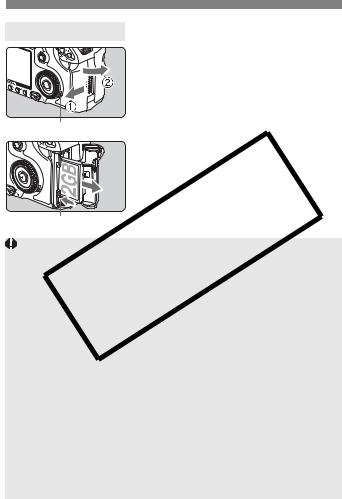
Installing and Removing the CF Card
Removing the Card
1
Open the cover.
Set the power switch to <2>.
Make sure the access lamp is off, then open the cover.
Access lamp
2 Remove the card.
Press the card ejection button.
X The card will come out.
Close the cover.
Card ejection COPYbutton
The access lamp lights or blinks while the picture is taken, when data is being transferred to the card and when data is being recorded, read, or erased on the card. While the access lamp is lit or blinking, never do any of the following. Doing so may damage the image data. It may also damage the card or camera.
• Opening the card slot cover.
• Removing the battery.
• Shaking or banging the camera around.
If the card already contains recorded images, the image number might not start from 0001 (p.80).
If a card-related error message is displayed on the LCD monitor, remove and reinstall the card. If the error persists, use a different card.
If you can transfer all the images in the card to a personal computer, transfer all the images and then format the card. The card may then return to normal.
When holding a hard disk-type card, always hold its sides. You may damage the card by holding its flat surfaces. Compared to CF cards, hard disk-type cards are more vulnerable to vibration and physical shock. If you use such a card, be careful not to subject the camera to vibration or physical shock especially while recording or displaying images.
30
